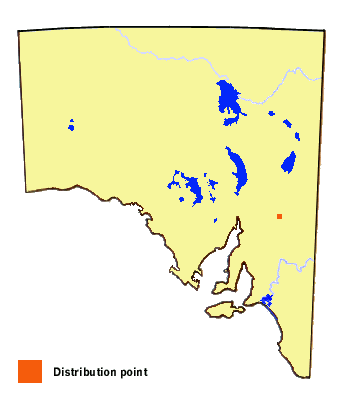Small Purple Line-blue
Prosotas dubiosa dubiosa (Semper)

Interesting Aspects
This butterfly was only recently (1999) reported as being found in South Australia. It is similar in size and colour to the very common Two-spotted Line-blue (Nacaduba biocellata) and could easily be overlooked in the field for this butterfly due to the proliferation of the latter in flight. It differs from the Two-spotted Line-blue in not having the yellowish orange underside to the forewings, and by usually having only one distinctive hindwing tornal spot. However, repeated attempts to relocate the butterfly have not been successful.
The butterfly has a strong flight, but usually of short duration. Both sexes normally remain near the hostplant, although males will hilltop. The extent of the blue areas on the wings of the female is variable.

